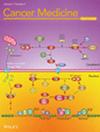The Impact of High lncRNA Expression on Clinicopathological Characteristics and Prognosis of Endometrial Cancer Patients: A Meta-Analysis
Abstract
Backgrounds
A growing number of systematic bioinformatics analyses were conducted to investigate the mechanism of interaction between long non-coding RNA (lncRNA) and endometrial carcinoma (EC) to predict the prognosis. However, there is no evidence-based evidence that abnormal lncRNA expression is strongly associated with the pathological characteristics and prognosis of EC patients. In this meta-analysis, we systematically evaluated the relationship between upregulated lncRNA expression levels and clinicopathological features, five-year survival rate, and progression-free survival (PFS).
Methods
A systematic search was performed across seven reputable databases, namely the China National Knowledge Infrastructure, Wanfang, Wipu, PubMed, Web of Science, Cochrane Library, and Embase, encompassing the period from the inception of each database until November 27, 2022. Heterogeneity among the studies was assessed through the application of Cochran's Q and I2 statistics. All statistical analyses were conducted using Stata 14.0 software.
Results
This study encompassed 30 clinical studies, involving a total of 2469 EC patients, and examined the expression of 24 lncRNAs, which were upregulated in EC samples. EC patients with higher expression of lncRNAs showed a later FIGO stage (OR = 1.94, 95% CI: 1.29 ~ 2.91), a poorer histological grade (OR = 3.40, 95% CI: 2.51 ~ 4.60), earlier deep myometrial invasion (OR = 2.57, 95% CI: 1.94 ~ 3.41), a higher likelihood of lymphatic vascular space infiltration (OR = 2.86, 95% CI: 1.15 ~ 7.14), an increased propensity for lymph node metastasis (OR = 2.89, 95% CI: 1.82 ~ 4.60), and a greater likelihood of distant metastasis (OR = 2.39, 95% CI: 1.33 ~ 4.30). All of these were statistically significant (p < 0.05). Furthermore, EC patients with a higher expression level of lncRNAs were significantly associated with five-year survival (p < 0.05) and PFS (p < 0.05).
Conclusions
High expression levels of upregulated lncRNAs in EC patients are associated with unfavorable clinicopathological features, a poor five-year survival rate, and PFS. It serves as a detrimental prognostic factor and might be a biomarker and therapeutic target for EC.


 求助内容:
求助内容: 应助结果提醒方式:
应助结果提醒方式:


